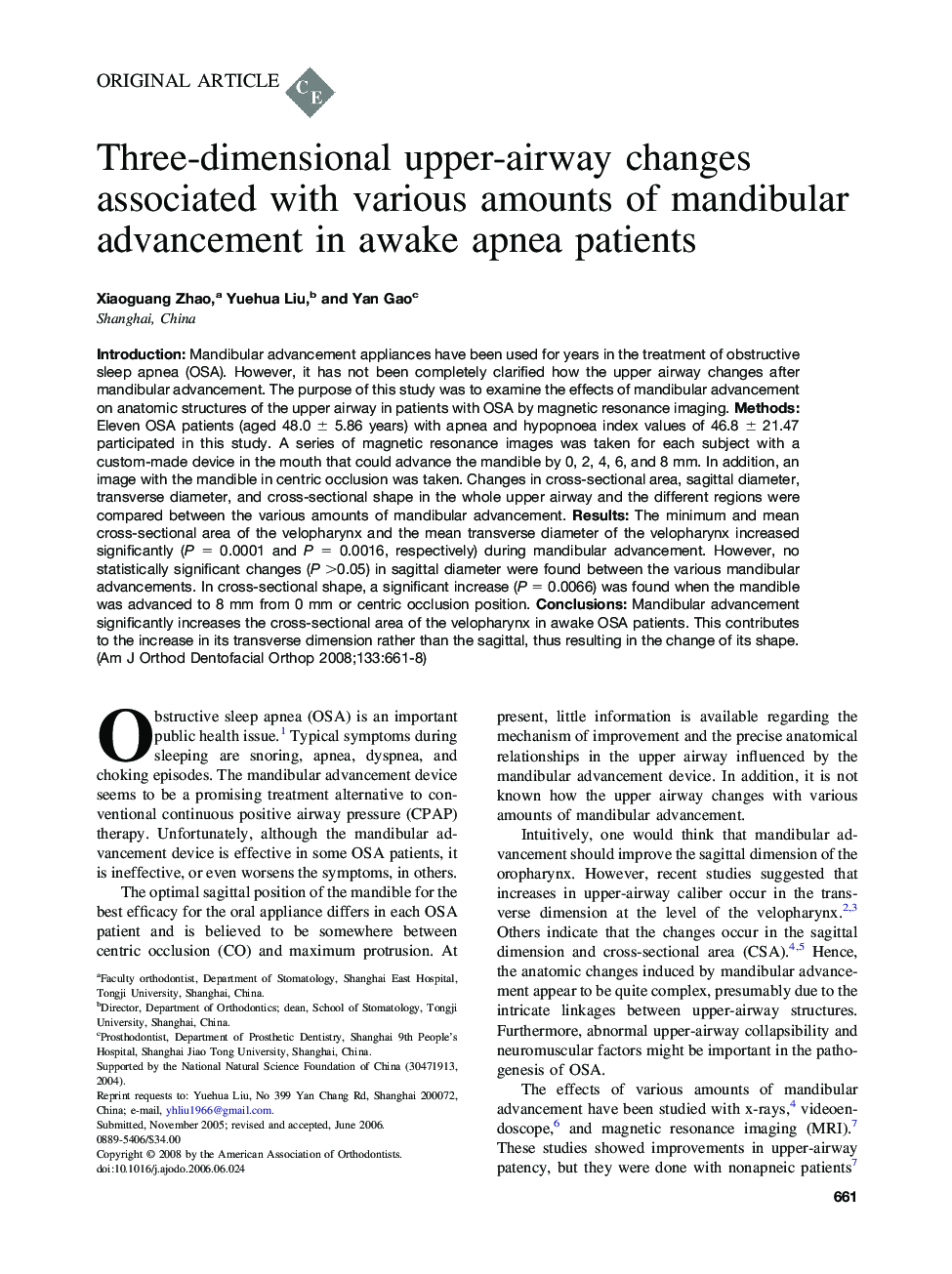| Article ID | Journal | Published Year | Pages | File Type |
|---|---|---|---|---|
| 3120234 | American Journal of Orthodontics and Dentofacial Orthopedics | 2008 | 8 Pages |
Introduction: Mandibular advancement appliances have been used for years in the treatment of obstructive sleep apnea (OSA). However, it has not been completely clarified how the upper airway changes after mandibular advancement. The purpose of this study was to examine the effects of mandibular advancement on anatomic structures of the upper airway in patients with OSA by magnetic resonance imaging. Methods: Eleven OSA patients (aged 48.0 ± 5.86 years) with apnea and hypopnoea index values of 46.8 ± 21.47 participated in this study. A series of magnetic resonance images was taken for each subject with a custom-made device in the mouth that could advance the mandible by 0, 2, 4, 6, and 8 mm. In addition, an image with the mandible in centric occlusion was taken. Changes in cross-sectional area, sagittal diameter, transverse diameter, and cross-sectional shape in the whole upper airway and the different regions were compared between the various amounts of mandibular advancement. Results: The minimum and mean cross-sectional area of the velopharynx and the mean transverse diameter of the velopharynx increased significantly (P = 0.0001 and P = 0.0016, respectively) during mandibular advancement. However, no statistically significant changes (P >0.05) in sagittal diameter were found between the various mandibular advancements. In cross-sectional shape, a significant increase (P = 0.0066) was found when the mandible was advanced to 8 mm from 0 mm or centric occlusion position. Conclusions: Mandibular advancement significantly increases the cross-sectional area of the velopharynx in awake OSA patients. This contributes to the increase in its transverse dimension rather than the sagittal, thus resulting in the change of its shape.
